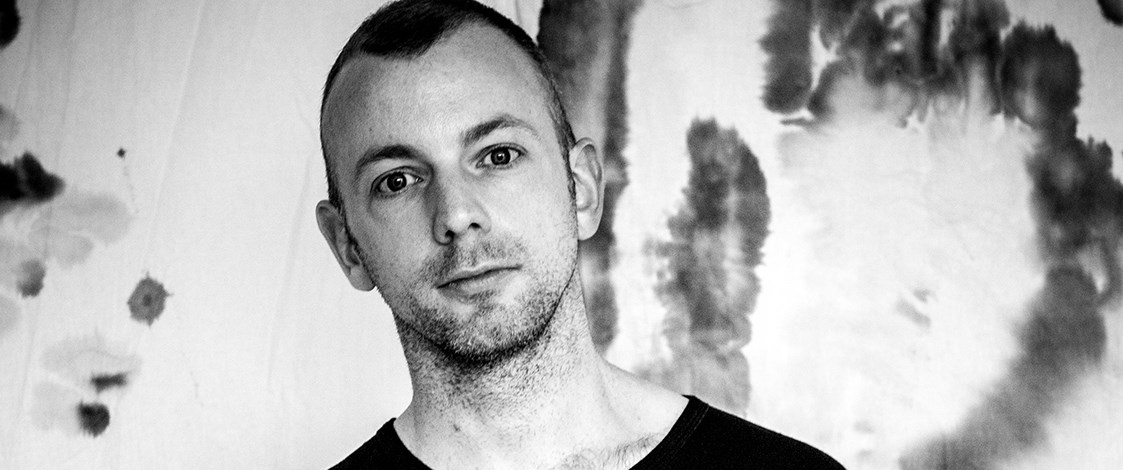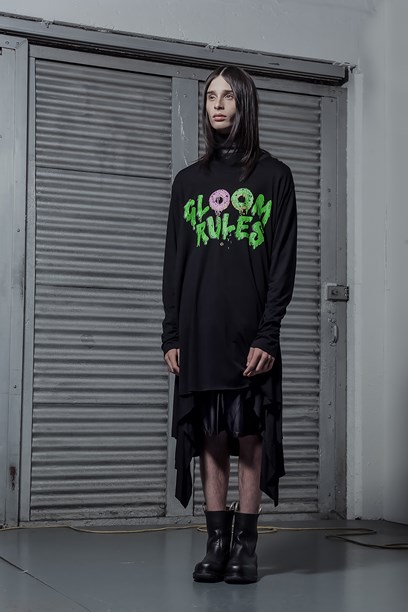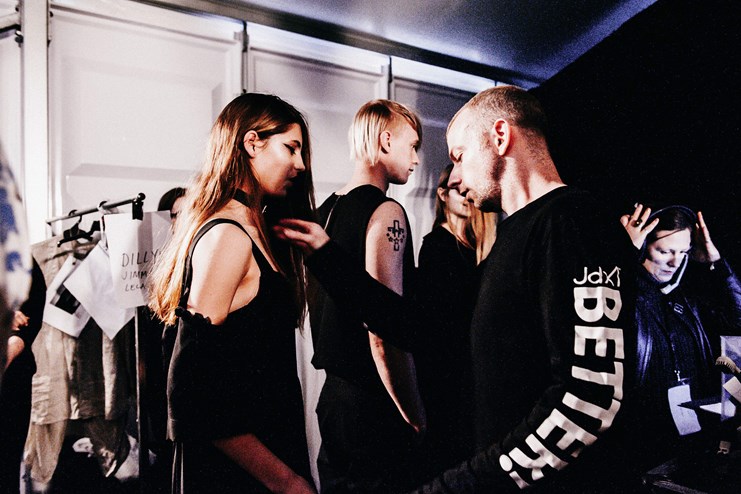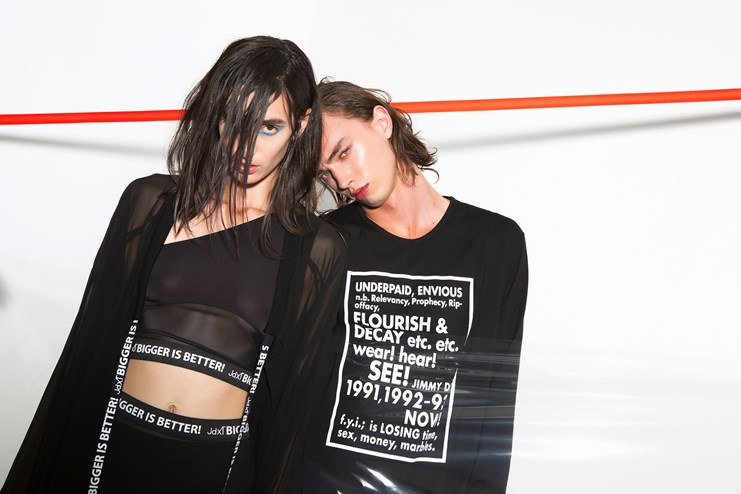Stories
Jimmy D
2004-

Discovering cutting edge pop culture magazines like The Face and Pavement in his final year at high school triggered Jimmy D designer James Dobson’s love of fashion.
"Both publications were photographing fashion in a way I’d never seen before," says James. "I’d always thought of fashion as being glossy and inaccessible - impossibly expensive clothes photographed on supermodels in glowing white studios or exotic locations. But for the first time I saw interesting clothes photographed in grungy or suburban locations, and growing up in Upper Hutt was something I related to."
Local title Pavement also introduced James to a new wave of emerging New Zealand designers who were "coming through the ranks and shaking things up."
"I vividly remember seeing a Starfish campaign where a model was photographed in front of what looked like council housing and it was just really inspiring - I could relate to it, and I felt like I could finally be a part of this world," says James.
From there he began a Bachelor of Design majoring in Photographic Design at Massey University in Wellington, with the initial plan of becoming a fashion photographer.
"In my second year of design school I went into a local store called Unity Women that stocked a number of New Zealand labels I was obsessed with - Karen Walker, Kate Sylvester, Nicholas Blanchet and Natalija Kucija. I met the owner, Tania Rupapera, and showed her some of my photography and ideas I had for marketing her store and she hired me on the spot."
"This was around the time that the 'New Zealand Four' (Zambesi, NOM*d, WORLD and Karen Walker) showed in London, and I was completely intoxicated with fashion at this point - I was so inspired that four designers based in little ol’ New Zealand could be showing in London. They were heralded as ‘the new Belgium’ and I felt part of a fashion scene that was really taking off."
"I worked for Unity Women during the rest of my degree, coming up with ideas for seasonal concepts and campaigns, working with the photographer and with Tania styling the shoots, as well as slowly making my way onto the shop floor - at this point a guy working in women’s retail was pretty unusual - and it’s from working on the shop floor that my desire to start my own label slowly evolved."
"I learnt so much about what women wanted to wear, and from turning clothes inside out and learning about finishing, construction and fit. It inspired me to take a patternmaking paper in my final year - still my only official fashion training to date."
In 2001 when his photography degree was complete, James followed in the New Zealand Four’s footsteps back to his native United Kingdom (his family emigrated to New Zealand when he was four years old) to dip his toe into London life.
"I went through a men’s fashion magazine and looked at the stockists page for my favourite labels, Margiela, Comme des Garcons, Alexander McQueen, and checked out where they were stocked. Then I systematically dropped my CV off at every store. I ended up getting a job working for a high-end men’s clothing store in South Kensington called The Library."
"I knew I either wanted to be a stylist or fashion designer, but the idea of doing either in London without any formal fashion training, and competing with hundreds of Central Saint Martins or London College of Fashion graduates was overwhelming."
So when Unity owner Tania Rupapera got in touch in early 2003 to say she was looking for a manager for her newly opened Auckland store, James decided the time was right to head home.
In 2004, with a small cash injection from his UK tax return, James found a pattern maker and started work on his first collection.
"It was about 10-12 pieces, based on the idea of a 'Glasgow Kiss' - slang for a head butt," he says. "I loved the idea of something that sounded so beautiful but was actually super violent."
"It featured full circle silk skirts that I sanded the edges of, so they were not just fraying but completely ravaged, mixed with slogan-emblazoned tees. I was still working for Unity at the time and they picked up the collection."
"I also entered it into the 2005 Mercedes-Benz Start-Up Awards, where I was up against designers like Cybèle and Deborah Sweeney. Much to my own surprise I won, and got to show my second collection at Australian Fashion Week in the New Generation show. And that’s kind of the story of how Jimmy D began…"
James says the name Jimmy D came from a photoshoot he did while working for Unity Women. "I made some shoes out of curtain rings and cotton tape and the photographer liked them so much he wanted to use them for a shoot and said he’d credit me."
"'Shoes by James' didn’t sound right to me, so the photographer suggested 'shoes by Jimmy D' and I instantly liked the new persona that had been created. It was a role I could step in and out of, and was less serious than my actual name. In my head 'Jimmy D' was some kind of burly trucker completely at odds with the fashion world - which I loved."
More than a decade into the label, James says his design philosophy is pretty unchanged from when he began. "I’m still drawn to contrasts - I love mixing high and low - silks with t-shirting, sport with luxe, masculine with feminine, darkness with humour. I think also having grown up feeling like a bit of an outsider I’m drawn to subcultures and characters that always dwell on the peripheries."

A Jimmy D design from autumn/winter 2013. Image © Jimmy D.
Inspiration can come from anywhere - previous collections have been inspired by the books of authors like Bret Easton Ellis, films by Gregg Araki, imaginary characters from the mid-west of the United States, the photography of Nobuyoshi Araki and black-metal music.
"I’m drawn to the idea of newness, and putting two seemingly disparate elements together to create something new, like black-metal music and sportswear. Concepts are really important to me, I personally think it’s the only way to create something you haven’t seen before."
Another way James keeps the label, and design process, fresh is by collaborating with "incredibly creative and inspiring friends."
"I knew my limitations early on in terms of creating prints for my t-shirts, so I enlisted friends to work with, and I enjoyed the process of letting someone in on my inspirations and seeing where it took them. There’s something really exciting about how unexpected the outcome can be."
"We have a legacy now of creating screenprints and/or fabric prints that connect with the concept each season, and often I know someone in my peer group that’s right to work with - Erin Forsyth’s cutesy but gross illustrations made her the perfect choice for our doughnuts dripping with maggots and pentacles and Andrew McLeod’s gothic, metal sensibility made him the go-to for our Black Metal collection. It’s about finding the right person for the right collection."

James backstage at a Jimmy D show. Image © Jimmy D.
James says the Jimmy D brand is often associated with darkness - both in colour and attitude - which he agrees is fairly accurate, "but I also think there’s a sense of humour to what I do. I don’t like things when they get too serious, I always maintain that what we’re doing is only fashion, and it shouldn’t be too up its own arse."
The label’s demographic has stayed consistent, but James says it’s also been consistently diverse. "Because I’m drawn to contrasts, the collection usually has, for example, a t-shirting component designed to be mixed with draped silk dresses. Some younger customers may buy just the printed tees, while older customers may just buy the silk dresses."
"But for me it’s always about the combination - when I’m putting a collection together and samples are coming in, I feel a bit angsty if the collection is looking too silky or too t-shirty. The balance of both is everything to me, and I think that’s how I’ve maintained such a diverse demographic."

Designs by Jimmy D. Image © Jimmy D.
He also cites his time in retail [in 2009 James co-founded Children of Vision boutique with Vicky Chan, which the duo ran until mid-2016] as an indispensable resource. "I’m always thinking about what my customers already have from me, so I really push myself to experiment with new fabrics, new shapes and new proportions to make sure I’m giving my customers something new every season. Also, in the last few years, I’ve expanded the unisex and menswear components of my collections, which mostly stemmed from thinking about what I would wear from each range."
In keeping with that thinking around building and adding to earlier collections both for himself and for his customers, the label has moved away from designating collections by season and instead has given them numbers. He has not however given up the pleasure of giving them offbeat titles.
Collection 028a was titled Kiss and Makeup and coincided with a deep dive into the world of beauty and makeup. Featuring an Instant Magic Sheet Mask print and a multicolour swirling pattern that drew its inspiration from the bold brights of an eye makeup compact, it also signalled the start of a new project, Beauty Benders. Together with model Andrey Sukhomlinov, James launched this Instagram identity as a platform to host conversations and explorations of makeup for the adventurous.
Gathering and creating beauty, ugly, and avant-garde looks that challenge convention, Beauty Benders is an invitation to everyone to indulge their creative fantasy. For collection 029a, Jimmy's Quest, he is expanding his vocabulary of dress even further with the addition of a scent. This has been composed in Wellington and will be shared with his clients in late 2021.
"I have the best customers - they’re usually creative, fashion-forward people that feel empowered by wearing my clothing. They appreciate unique design and details like the fact that we’re locally made, impeccably finished and use the finest fabrics. And that my stuff can be a bit mental sometimes. I think they like that too."
Text by Josie Steenhart. Banner image © Jimmy D.
First published November 2016, updated July 2021.